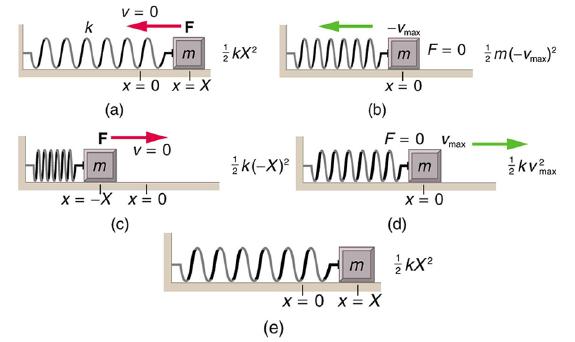Damping oscillatory motion is important in many systems, and the ability to control the damping is even
Question:
Damping oscillatory motion is important in many systems, and the ability to control the damping is even more so. This is generally attained using non-conservative forces such as the friction between surfaces, and viscosity for objects moving through fluids. The following example considers friction. Suppose a 0.200-kg object is connected to a spring as shown in Figure 16.22, but there is simple friction between the object and the surface, and the coefficient of friction μk is equal to 0.0800.
(a) What is the frictional force between the surfaces?
(b) What total distance does the object travel if it is released 0.100 m from equilibrium, starting at v = 0? The force constant of the spring is k = 50.0 N/m.
Strategy
This problem requires you to integrate your knowledge of various concepts regarding waves, oscillations, and damping. To solve an integrated concept problem, you must first identify the physical principles involved. Part (a) is about the frictional force. This is a topic involving the application of Newton’s Laws. Part (b) requires an understanding of work and conservation of energy, as well as some understanding of horizontal oscillatory systems.
Now that we have identified the principles we must apply in order to solve the problems, we need to identify the knowns and unknowns for each part of the question, as well as the quantity that is constant in Part (a) and Part (b) of the question.
Step by Step Answer:






